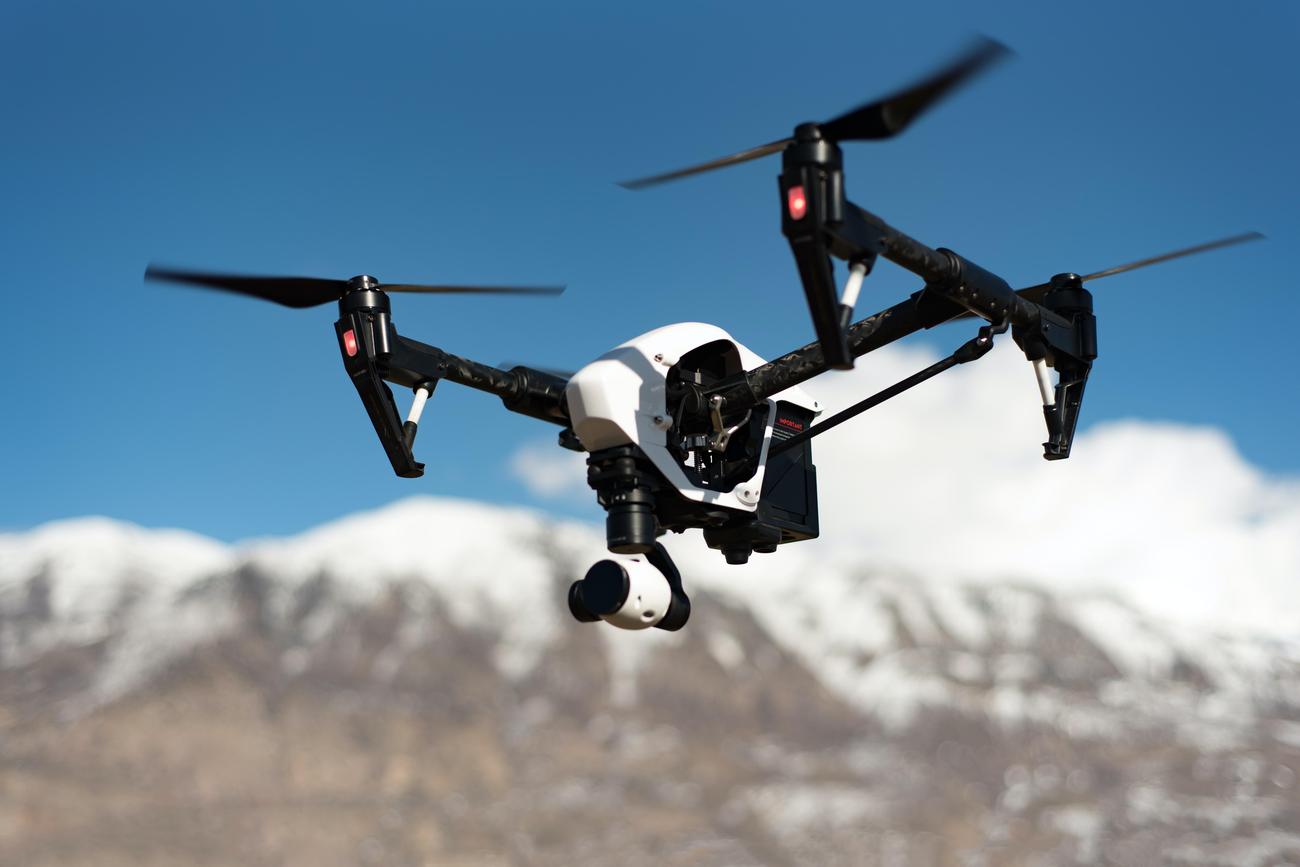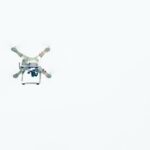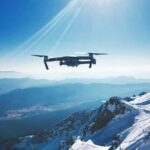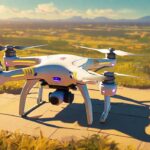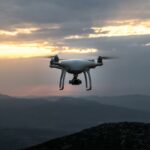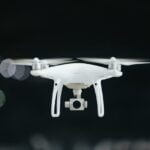In the fast-paced world of modern law enforcement, drones have emerged as an indispensable tool, revolutionizing the way crimes are prevented, investigated, and even solved. The seamless fusion of advanced technology and law enforcement has created a new era of policing, where drones soar above us, becoming the eyes and ears of our cities. But amidst all the buzz surrounding this emerging technology, it is crucial to uncover the facts about drones in law enforcement, diving deep into their capabilities, limitations, and the ethical implications they raise. Join me as we embark on a closer look at these unmanned aerial vehicles, revealing the truth behind their role in shaping the future of public safety.
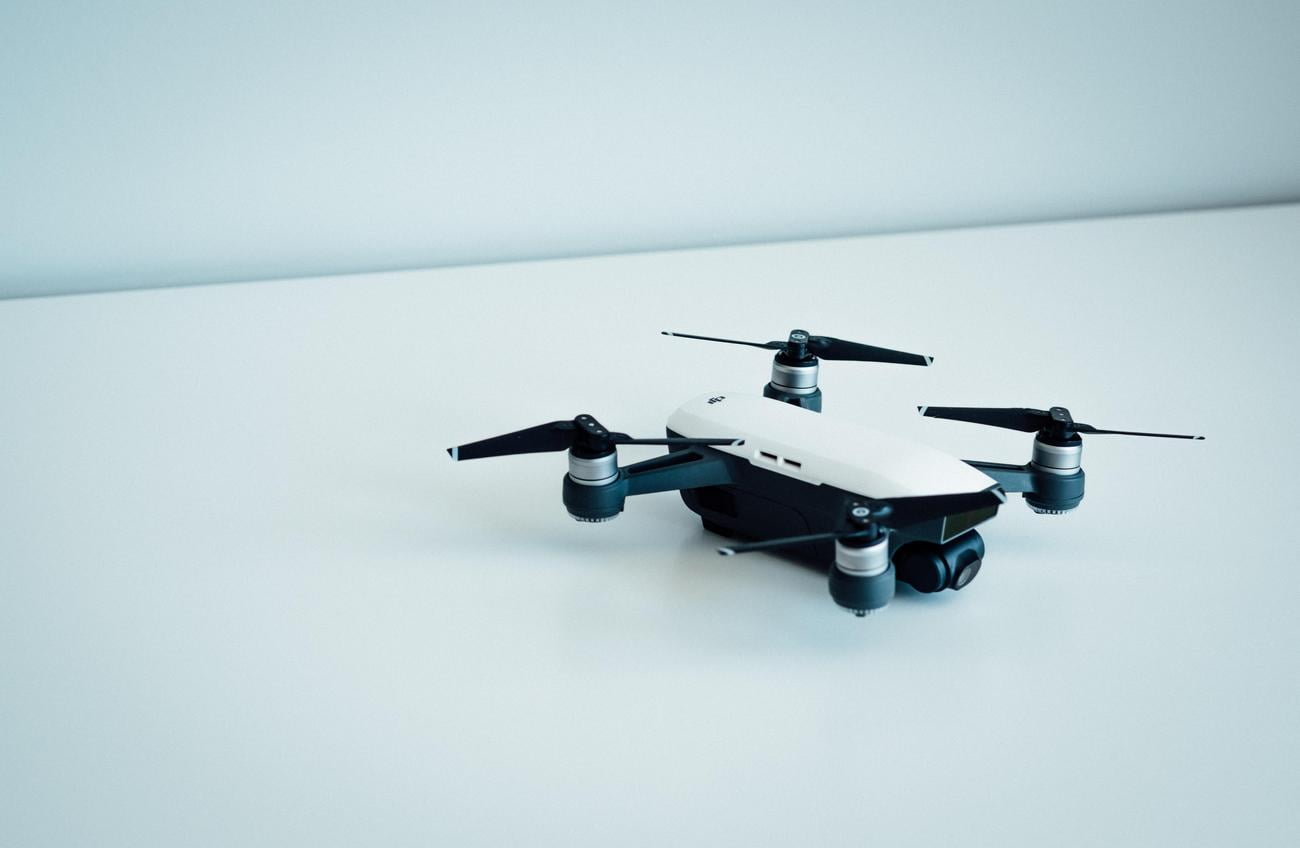
Facts about Drones in Law Enforcement
Law enforcement agencies have increasingly turned to drones as powerful tools in their crime-fighting arsenal. These unmanned aerial vehicles (UAVs) offer a range of capabilities that greatly enhance the effectiveness and efficiency of modern policing. Let’s dive into some key facts about drones in law enforcement.
1. Police Drones Can Aid in Finding Missing People
One of the most valuable applications of drones in law enforcement is their ability to search for missing individuals. Equipped with thermal imaging cameras and advanced search algorithms, drones can cover large areas quickly and effectively. Their aerial perspective allows them to spot people who may be hidden from ground-based search teams. In critical situations where every second counts, drones can make a life-saving difference.
Quote: “Drones equipped with thermal imaging cameras are an invaluable asset to search and rescue efforts, enabling law enforcement to cover vast areas in a fraction of the time it would take with traditional methods.”
2. Drones Are Invaluable for Gathering Evidence
Gone are the days when investigators had to rely solely on eyewitness accounts and physical evidence collected at crime scenes. Police drones equipped with high-resolution cameras can capture detailed imagery and video from various angles, providing crucial evidence for investigations. This visual data helps reconstruct crime scenes, identify suspects, and strengthen legal cases.
Quote: “The use of drones in evidence gathering revolutionizes the forensic process, allowing law enforcement to capture a comprehensive and accurate record of crime scenes, bolstering the pursuit of justice.”
3. Drones Enable Quick Disaster Response
During natural disasters or emergencies, time is of the essence. Drones enable law enforcement to respond swiftly and effectively. Equipped with real-time video transmission capabilities, they provide vital situational awareness to incident commanders. This aerial perspective guides emergency responders in making critical decisions and ensures that resources are deployed where they are needed most.
Quote: “Drones offer a rapid response capability in disaster-stricken areas, allowing law enforcement to assess the situation, locate survivors, and coordinate rescue operations, ultimately saving lives.”
4. Drones Come in Various Sizes and Abilities
Drones used by law enforcement can range from small, nimble quadcopters to larger, more sophisticated models. The size and capabilities of these drones vary depending on the specific operational requirements. Smaller drones are often deployed in urban areas for surveillance and crowd monitoring, while larger drones enable longer flight times and carry specialized equipment for specific missions.
Quote: “With a wide range of options available, law enforcement agencies can choose the most suitable drone for their specific operational needs, ensuring optimal performance and flexibility.”
5. Advanced Surveillance Tools Can be Equipped on Police Drones
Law enforcement drones can be equipped with various advanced surveillance tools, such as facial recognition software, license plate readers, and even biometric sensors. These tools enable law enforcement agencies to quickly and accurately identify individuals, track suspects, and enhance public safety. However, the use of such technologies raises important considerations regarding privacy and civil liberties.
Quote: “Equipping drones with advanced surveillance tools grants law enforcement agencies unprecedented capabilities in identifying and tracking individuals, revolutionizing crime prevention and detection. However, striking the right balance between public safety and privacy is crucial.”
6. Police Drones Play a Role in Traffic Collision Reconstruction
Traffic collisions can be complex and challenging to investigate. Drones equipped with cameras and 3D mapping software provide law enforcement with a valuable tool for reconstructing accident scenes. From capturing precise measurements and angles to creating accurate models, drones significantly improve the accuracy and efficiency of traffic collision investigations.
Quote: “Drones contribute to more accurate accident reconstructions, aiding law enforcement in determining the causes of traffic collisions, assigning liability, and implementing effective preventive measures.”
7. Drones Are Capable of Communication and Cooperation
As technology advances, drones are becoming increasingly capable of communicating and cooperating with one another. This opens up new possibilities for law enforcement operations. Multiple drones can work together to cover larger areas, exchange real-time information, and perform synchronized maneuvers. Such capabilities enhance the effectiveness and efficiency of law enforcement tasks, including surveillance and search operations.
Quote: “The ability of drones to communicate and cooperate with each other allows law enforcement agencies to leverage teamwork and synergy, maximizing their operational effectiveness in diverse scenarios.”
8. The Lack of a National Framework Governing the Use of Police Drones
Despite their widespread adoption, there is currently no national framework governing the use of drones by law enforcement agencies in many countries. This absence of standardized regulations presents challenges and uncertainties. It is crucial for policymakers to establish guidelines and frameworks that address concerns related to privacy, data protection, and the ethical use of drones in law enforcement.
Quote: “The lack of a comprehensive national framework poses challenges in ensuring accountability and safeguarding privacy in the use of police drones. Establishing appropriate regulations and guidelines is imperative for responsible and effective law enforcement practices.”
Conclusion
Drones have become an integral part of modern law enforcement, offering an array of benefits and raising important considerations. These unmanned aerial vehicles contribute to finding missing persons, gathering evidence, responding to disasters, and enhancing the overall safety and effectiveness of law enforcement operations. However, it is vital to ensure that the use of drones aligns with legal and ethical principles, promoting trust and responsible deployment for the benefit of society as a whole.
Drones, also known as unmanned aerial vehicles, have become increasingly popular in recent years. They offer a wide range of practical and recreational uses, making them a fascinating subject to explore. If you’re curious about the latest facts and developments in the world of drones, you’re in luck! Our website provides a comprehensive list of intriguing and up-to-date information about these futuristic devices. From their history and technology to their applications in various industries, our collection of facts about drones will surely capture your interest. So why wait? Click here to uncover the secrets behind these fascinating flying machines: facts about drones.
Facts about drones law enforcement
Did you know that drones are revolutionizing the field of law enforcement? These unmanned aerial vehicles are being utilized in various ways to enhance public safety. From monitoring large crowds during events to searching for missing persons, drones in law enforcement are proving to be invaluable. If you’re interested in learning more about the use of drones in law enforcement and the facts surrounding this innovative technology, click here for a comprehensive article on the subject.
Drone use in law enforcement has skyrocketed in recent years and it’s not hard to see why. The ability to quickly deploy drones to inaccessible areas or high-risk situations provides law enforcement agencies with a significant advantage. Discover more about the various applications and benefits of drones in law enforcement by clicking here. Whether it’s tracking suspects or documenting crime scenes, drones are revolutionizing the way law enforcement operates.
Looking to delve deeper into the topic of drone use in law enforcement? Our article titled “Drone Use in Law Enforcement” takes a comprehensive look at the advancements and challenges in this emerging field. Click here to uncover the latest developments and understand the implications of drone technology on law enforcement practices.
As technology continues to advance, drones prove to be an invaluable asset to law enforcement agencies. Harnessing the power of these unmanned aerial vehicles allows for improved situational awareness, enhanced emergency response, and increased public safety. Don’t miss out on the opportunity to stay informed and up-to-date on all things drones and law enforcement. Click the provided links above to learn more about this fascinating intersection of technology and public safety.
Drones in Law Enforcement: Enhancing Criminal Apprehension
[youtube v=”FqWe3k71Q48″]
How Police Departments Utilize Drones to Capture Criminals
Law enforcement agencies across the world are continuously seeking innovative methods to enhance public safety and improve their ability to catch criminals. One such advancement that has proven to be invaluable is the use of drones. A prime example of the effectiveness of these unmanned aerial vehicles is the North Little Rock Police Department, which successfully apprehended a criminal in the act using this cutting-edge technology.
On a fateful night, officers received reports of suspects breaking into vehicles in the Walnut area. While one suspect managed to escape, the other fled to a nearby street. However, thanks to the deployment of a drone equipped with advanced technology, the officers were able to maintain constant surveillance on the criminal’s movements. This allowed them to promptly locate and apprehend the suspect, effectively preventing further crimes. As Lieutenant Craig Edwards from the North Little Rock Police Department explains, “Drones have really changed some of the ways we can go after suspects.”
The Versatile Capabilities of Police Drones
Law enforcement drones come equipped with a range of features and capabilities that significantly aid officers in their pursuit of criminals. One primary advantage is their ability to provide valuable aerial views and gather crucial evidence. High-resolution cameras mounted on these drones enable officers to collect vital information that can aid investigations and reconstruct crime scenes accurately. Additionally, thermal imaging cameras and search algorithms allow drones to cover extensive areas in a short amount of time, facilitating the search for missing persons.
Another critical aspect of utilizing drones in police operations is their role in disaster response. By providing situational awareness to incident commanders and guiding emergency responders, drones enable swift and effective response efforts. Through real-time aerial footage, officers can assess the situation, identify potential dangers, and allocate resources accordingly. This invaluable support allows authorities to optimize their response strategies and maximize the safety of both responders and affected individuals.
Tailoring Drones to Fit Specific Operational Needs
Law enforcement agencies have the freedom to choose the most suitable drone for their specific operational requirements. Drones come in various sizes and possess different abilities, enabling agencies to select the perfect fit for their needs. This flexibility ensures that law enforcement drones can adapt to various scenarios, whether it be monitoring large crowds during public events or navigating through complex urban environments.
Moreover, drones can be equipped with state-of-the-art surveillance tools, such as facial recognition software and license plate readers. While these technologies undoubtedly enhance public safety by identifying potential threats and aiding investigations, concerns regarding privacy and civil liberties are also rightly raised. Striking the right balance between utilizing advanced surveillance tools and respecting individual privacy remains an ongoing challenge for law enforcement agencies.
Drones: A Valuable Tool in Crime Investigation and Prevention
Drones serve as a valuable asset for law enforcement agencies in numerous other ways, extending beyond simply apprehending suspects. For instance, they play a crucial role in traffic collision reconstruction. By capturing precise measurements and creating accurate models of accident scenes, drones expedite investigations, enhance accuracy, and provide vital evidence for legal proceedings.
Furthermore, the ability of drones to communicate and cooperate with each other presents new possibilities for law enforcement tasks. This improved connectivity enhances the efficiency and effectiveness of operations such as search and rescue missions, coordinated surveillance, and tactical response.
Challenges and Future Directions
While the benefits of using drones in law enforcement are undeniable, there are challenges that need to be addressed to ensure their responsible use. Currently, the lack of a national framework governing the use of police drones poses accountability and privacy concerns. Regulations and guidelines must be established to address these issues, protecting individuals’ privacy rights and ensuring data protection. Ethical considerations regarding the use of drones in law enforcement activities are also critical and warrant further exploration.
In conclusion, the North Little Rock Police Department’s successful apprehension of a criminal using a drone highlights the significant potential of this technology in combating crime. From aiding investigations and providing real-time situational awareness to optimizing disaster response efforts, drones have proved to be an essential tool for law enforcement agencies. As technology continues to advance, it is crucial to strike a balance between utilizing these advancements for public safety while respecting privacy and civil liberties. As Lieutenant Craig Edwards emphasizes, “It’s not big brother stuff; we use drones for public safety and apprehending suspects.”
“Drones have really changed some of the ways we can go after suspects.” – Lieutenant Craig Edwards, North Little Rock Police Department
FAQ
Q: What are some potential uses of police drones?
A: Police drones can be used to find missing people, gather evidence, provide fast disaster response, reconstruct traffic collisions, and enhance safety and operational effectiveness in law enforcement.
Q: How can police equip drones for surveillance?
A: Police can equip drones with advanced surveillance tools, allowing them to gather valuable information and identify individuals in a more efficient manner.
Q: Is there a national framework governing the use of police drones?
A: Currently, there is no national framework governing the use of police drones, leading to variations in regulations and practices across different law enforcement agencies.
Q: What are some ethical considerations with the use of drones in policing?
A: The use of armed drones in policing raises significant ethical considerations, as their deployment can impact privacy rights, pose potential risks of misuse, and raise questions about accountability.
Q: How prevalent is the adoption of drones in law enforcement worldwide?
A: Drones are being rapidly adopted by law enforcement agencies worldwide, with their integration into operations and various specialized tasks becoming increasingly common.
- Discover Coffeeville, MS: A Small Town Rich in History and Grenada Lake Charm - November 25, 2024
- Discover Sabetha, KS: A Guide to Community, History, and Local Attractions - November 25, 2024
- Cornersville, Tennessee: A Crossroads of History and Southern Charm - November 25, 2024
